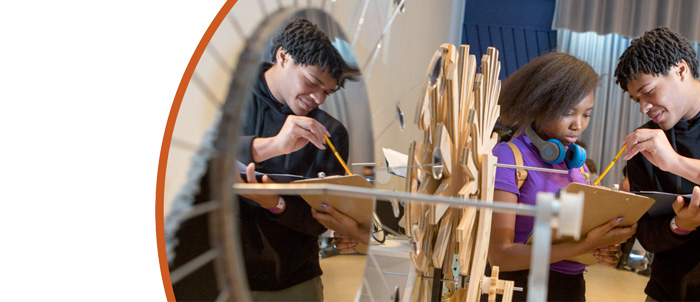Staying in Science: Investigating STEM Persistence Among High School Youth
Effective Years: 2021-2026
The American Museum of Natural History plans to investigate the relationship between mentored research and youths’ STEM trajectory from high school to early college. The study builds on a previously funded project that examined the experiences of 733 high school youth who participated in an out-of-school, in-depth science research and mentoring program through the New York City Science Research Mentoring Consortium. The current study will examine how 380 of the initial participants navigate obstacles and biases during college, workforce preparation, and initial jobs, and how the institutional settings for these experiences contribute to a sense of belonging and support or function to further marginalize them and challenge their motivation to pursue STEM education. The study will take an innovative approach of studying relationships among and changes in (1) youths’ participation in communities of practice associated with sustained, mentored science research experience; (2) youths’ social networks; and (3) youths’ academic achievement to identify variations in their pathways and supports. The project will generate evidence-based findings to position STEM education and workforce development initiatives to implement more effective broadening participation strategies.
The conceptual framework for the longitudinal research design is the Bronfenbrenner ecological model that enables the investigators to respond to the findings from the prior study and to the theoretical knowledge base that informs factors that mediate STEM persistence for historically marginalized youth. The investigators will investigate questions about how dominant institutional structures afford or limit STEM learning and integration of experiences for marginalized youth and how claims of objectivity and neutrality and a culture of meritocracy in the sciences affect opportunities for such youth. The investigators will use a mixed-methods approach to answer three research questions: (1) What factors influence commitment to, or divergence from, a pursuit of a STEM major and career? (2) How do institutions, internships, and workplaces create opportunities, experiences, and strategies for students to develop a sense of belonging or function to marginalize youth? (3) In what ways do youth experience and manage obstacles and biases, stereotypes, and microaggressions that they encounter in college, workforce preparation experiences, and first jobs? The study will focus on alumni who completed their mentored research in 2017 or 2018. Surveys will explore key constructs from the conceptual framework that all the investigators to operationalize the theoretical variables in the research design. The sources of data include surveys with alumni and significant adults, social network analysis surveys, and interviews. The study will provide insight into a key challenge that STEM fields face in increasing interest and persistence in STEM among underrepresented populations.
This project is supported by the EHR Core Research program that funds fundamental research on STEM learning and learning environments, broadening participation in STEM fields, and STEM workforce development.
This award reflects NSF's statutory mission and has been deemed worthy of support through evaluation using the Foundation's intellectual merit and broader impacts review criteria.




